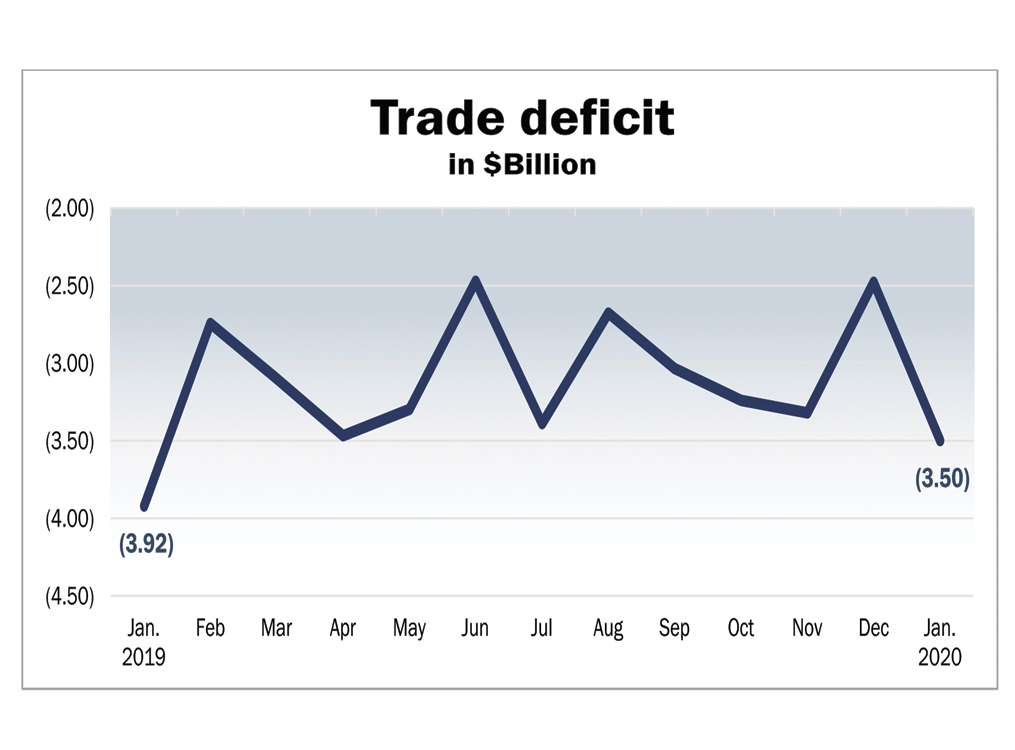The Duterte administration’s Economic Development Cluster (EDC) has approved the Department of Health’s (DOH) funding request of an additional P2.92 billion for its coronavirus disease 2019 (COVID-19) response.
The economic managers also assured it can cover the potential deficit brought by the impact of this outbreak, as the budget shortfall is seen to breach the government’s deficit cap, and could reach 3.6 percent of gross domestic product (GDP).
Carlos Dominguez, Department of Finance (DOF) secretary, told reporters in a press briefing in Manila yesterday the fund will be used for additional testing, augmentation of contact tracing and acquisition of additional personnel protective equipment for health workers at the national and local levels.
Dominguez said it will also fund isolation packages for patients who will be admitted for COVID-19, and this will be covered by the Philippine Health Insurance Corp.
“I have not seen the bill in the lower house, I understand there’s another one in the Senate, so we will see what will come out of that. As you know the situation… is developing quite fast,” Dominguez said, referring to funding requests also made in Congress.
The House committee on appropriations yesterday approved a P1.6-billion supplemental budget to fight COVID 19, a day before Congress goes on recess for the Lenten season.
Two House leaders have filed separate bills seeking a supplemental budget of more than P2 billion to help the Department of Health to battle the COVID 2019 novel coronavirus but only P1.6 billion is available right now, according to Deputy Treasurer Sharon Almanza of the Bureau of Treasury.
Dominguez said the P2.92 billion will be financed from “the normal sources (borrowings)… roughly a quarter foreign (borrowing), and three-fourths domestically.”
“The interest rates are actually moving in favor of ourselves, the borrowers, and that bodes well for our borrowing program. As of now, we see the stimulus program as being just keeping our expenditure budget where it is despite the fact that our revenue is going down, so that in itself is already stimulus package,” he added.
Dominguez said assuming that the COVID-19-induced disruptions last until after the middle of the year, the deficit could breach the 2020 program of 3.2 percent of GDP, to around 3.6 percent.
“The total revenue collections are expected to drop by around P91 billion. The corresponding increase in the borrowing level will provide financing for the increased deficit. Our credit rating is quite robust and we don’t expect any difficulty in covering a potential deficit that might occur because of the expected drop in economic activity because of this COVID,” Dominguez said.
“It’s (deficit) financiable, and quite frankly, it is necessary. Despite these difficulties we are not contemplating a reduction in our expenditures, our Build, Build, Build will go full blast, and so will all other programs of the government that are designed to improve people’s health, improve education levels of our people, and make sure the economy is humming along as it should,” he added.
Francisco Dakila, BSP deputy governor, said there may be a possible decline of 0.2 to 0.8 percentage points on remittance growth for the year.
“Our baseline before COVID-19 is three percent growth on remittances,” Dakila said.
Dominique Tutay, Department of Labor and Employment assistant secretary, said 47 establishments are having the flexible work arrangements covering 4,416 workers, while 19 establishments resorted to temporary closure covering a little over 300 workers. Tutay said these are in the industries of hotels, restaurants, tourism-related sectors, and a few in the manufacturing in regions three, six, seven, and 12.
Some 734 overseas Filipino workers who have been displaced particularly in Macau.
Ramon Lopez, Department of Trade and Industry secretary, aerospace, airlines, tourism, auto, auto parts, bananas, biscuits, electronics, footwear, furniture, iron and steel, pharmaceuticals, plastics, processed fruits, and textiles and garments, among others are the most affected sectors from supply chain disruption.




